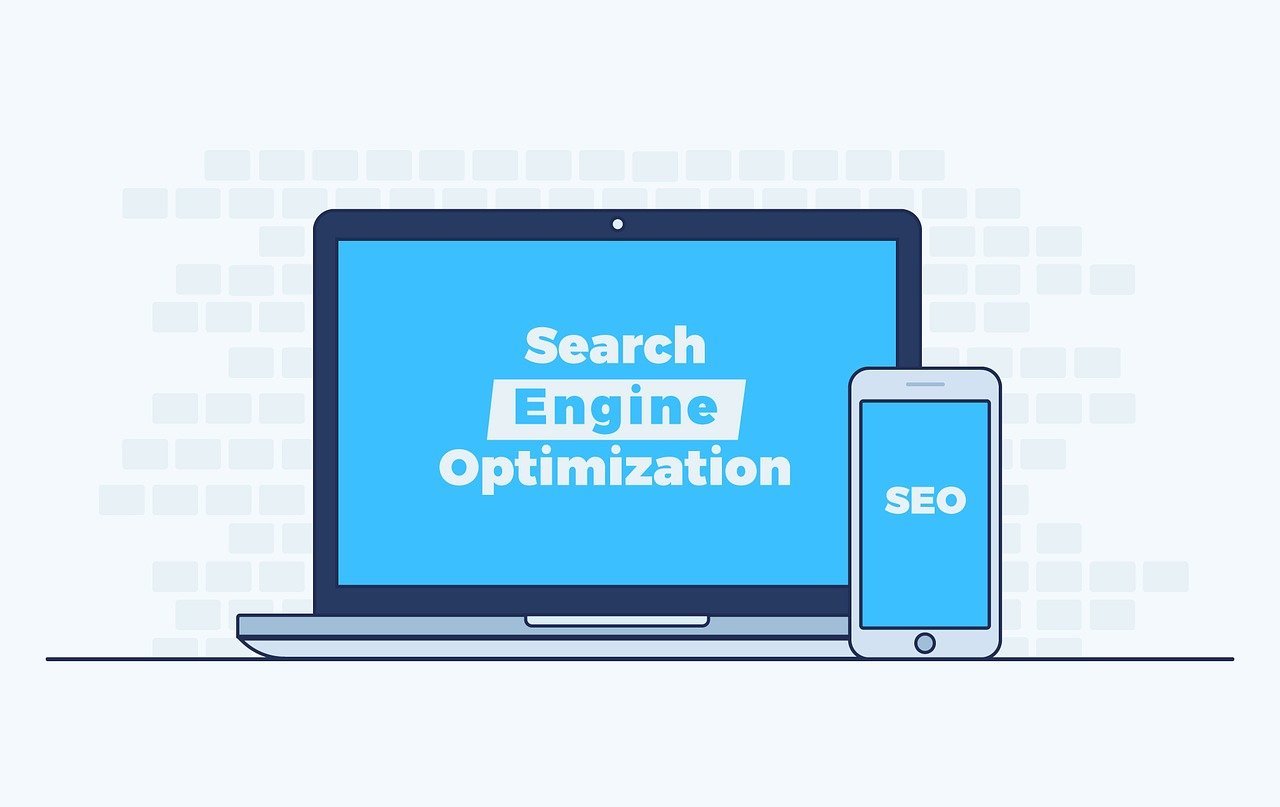Search engine optimization is today one of the most effective marketing methods available.
SEO requires a lot of work, but it is also an organic marketing method where you don’t pay for every click or impression. Unlike paid advertising in search engines where you pay to appear at the top of the search results, SEO is about optimizing your website in such a way that it ranks higher in the search results organically.
A well executed SEO strategy can drastically improve your ranking and generate a large amount of traffic and customers to your website. But as you probably know, SEO is not entirely easy and also requires regular work.
Search engines use hundreds of ranking factors to determine where a website should rank for a specific search term. That being said, it can be difficult to keep track of all the different aspects that you have to take into account.
To help you, we have therefore compiled a list of 76 SEO tips that you can (and should) use to improve your SEO results.
Whether you’re a beginner looking to understand the basics or a seasoned expert looking for in-depth knowledge, you’re sure to find at least some of these tips useful.
76 tips for SEO-optimizing your website
- Understand Your Audience: The first step to SEO success is to identify and understand your audience and then create relevant and engaging content.
- Keyword Optimization: Use relevant keywords strategically in your website content, titles, and meta descriptions. Keywords should be incorporated in a natural yet strategic way.
- Responsive Design: Make sure your website is responsive and works well on different devices and screen sizes. Keep in mind that the majority of users today search on search engines with their mobile phones.
- Fast Load Times: Optimize images and your website at large to improve site load times. Loading speed plays an important role in the user experience and therefore has a big impact on your ranking in search engines.
- SSL certificate: Don’t forget to get an SSL certificate for your website. This increases user confidence and can also improve search engine rankings.
- Sitemaps: Create and submit a sitemap to search engines to facilitate the indexing of your website. This allows your site to discover all the pages on your site and also index them faster.
- User-friendly URL structure: Create a logical and easy-to-understand URL structure for both users and search engines. Avoid unnecessary numbers, words, and letters that provide no value and only make your URLs unnecessarily long and complex.
- Optimize for local searches: If you have a Loka business, you should focus on working with a local SEO strategy to appear in local search results.
- Create high-quality content: Be sure to regularly publish relevant, informative, and high-quality content that attracts and retains visitors. This attracts more users but above all shows search engines that your page is regularly updated and that the information on your website is relevant.
- Header tags: Use so-called header tags (H1, H2, H3) to structure your web page and highlight important keywords. This also makes the structure of your website better and easier to read.
- Internal linking: Create relevant internal links between your web pages to improve the user experience and make it easier for search engines to navigate through different pages on your site.
- External Links: Build quality external links from trusted sources to increase your site’s authority. Linking to established and credible pages helps you strengthen the credibility of your own website.
- Mobile-friendliness: It is incredibly important that your website is mobile-friendly and works properly for mobile devices. As said earlier, a majority today use mobile phones to search on search engines.
- Optimize images: Compress the images on your website so that they are not as heavy and thus load faster. This increases the loading speed of your website as a whole, something search engines place a lot of importance on.
- User Experience (UX): User experience is incredibly important to search engines. For this reason, it is important to actively work to improve and create a positive user experience through a clear navigation and easy-to-understand layout.
- Social Media: Share your content on social media to increase visibility and generate links to your website. Social media links are known as social signals and although they are not as powerful as backlinks, they provide important signals to search engines that can contribute to improved rankings.
- Schema Markup: Implement so-called schema markup to improve how search engines understand and display your content in search results.
- Optimized Meta Descriptions: Write enticing and informative meta descriptions for each page. Meta descriptions can increase the click-through rate of search results and indicate to search engines that users prefer your page over others, improving your ranking.
- Avoid duplicate content: Make sure each page has unique content to avoid duplicate content and improve indexing.
- Robots txt file: Use a robots txt file to control the crawling of your website by search engines.
- Google My Business: Register and optimize your Google My Business profile for local SEO. When people search for something near them, your Google My Business profile can be displayed, which can contribute to more customers.
- User Reviews: Make it a habit to regularly respond to user reviews to build trust and improve local SEO results.
- Linking to trusted sources: By linking to trusted sources, you add credibility to your own content as you can include references detailing where you got your information from.
- Avoid over-optimization: Avoid keyword overuse and other SEO tactics that could be perceived as spam. It is important to have a balance and not to over-optimize your website in an unnatural way that can negatively affect the search engines view of your website.
- Include video content: Video has come to play an increasingly important role in SEO in recent years. Not least because Google owns YouTube. But above all, videos contribute to increased time on the page, which is an indicator to search engines that users like what they find on your page.
- Link internally to the most important pages: Internal linking is an important part of on-page SEO optimization. That being said, you should create internal links from different pages to your most important pages to reinforce their authority and create a good internal link structure.
- Provide Responsive Support: Make sure your website provides a user-friendly support experience, especially on mobile devices. That said, user experience is central to SEO so anything you can do to improve it is positive for SEO.
- Limit the use of Flash: Avoid using Flash as it can negatively affect loading time.
- Improve the 404 Page: 404 is an error message that appears when a user lands on a page that no longer exists. Above all, you should avoid 404 pages appearing at all, but in cases where you do have 404 pages, you should create a custom one that provides more information to the user and helps them find the right information if they end up wrong.
- Google Analytics: Implement Google Analytics to monitor and analyze your website performance. It is only when you can evaluate how your website is performing that you can evaluate which SEO strategies are working and which are not working as well. Analytics is one of the most used SEO tools so make sure to use this tool regularly.
- Create an XML sitemap: Create an XML sitemap to help search engines index your website.
- Monitor and manage dead links: Be sure to regularly monitor and correct dead links on your website. Dead links, also known as broken links, have a negative impact on the user experience, which can therefore negatively affect your SEO results.
- Use related keywords: Integrate related keywords to broaden your site’s visibility. Generally, each page should focus on a ‘main keyword’ that you want to rank for but in addition to this you should include a couple of related keywords that are relevant to the main keyword.
- Use schema.org: Implement schema.org markup to provide additional information to search engines.
- Short URLs: Use short and easy-to-read URLs to improve user experience and build links. Studies have shown that short but well-optimized URLs with relevant keywords perform better than long and highly specific URLs.
- Give unique titles to each page: Each page should have a unique and descriptive title to facilitate search engines and users.
- Optimize for local keywords: Use local keywords if your business is focused on a specific geographic location. For example, if you have a shoe store in New York, you should not just write “Shoes” but be more specific and focus on keywords such as “Shoes New York”. This will help you reach local customers.
- Link Building: As you probably know, backlinks are one of the most important ranking factors. For this reason, it is incredibly important to actively build quality links to your website.
- Monitor competitors: Track and analyze your competitors’ SEO strategies. You can learn a lot from your competitors and also better understand what strategies they use that you can use yourself.
- Optimize for quick answers (Featured Snippets): Structure the content to answer common questions and optimize to appear as featured answers in search results. You do this by concisely and clearly answering the main question in a part of the page.
- Hreflang attribute: Use the hreflang attribute if your site targets multiple languages or regions.
- CSS and JavaScript Compression: Reduce the size of CSS and JavaScript files through compression for faster load times.
- Use Header Responsively: Use the right HTML tags to structure your content hierarchically and improve your website’s SEO.
- Manage Duplicate Content: Avoid duplicate content through proper canonicalization and use of canonical tags.
- Optimize for local keywords: Tailor your content to include local keywords if your business has a local presence.
- User-friendly navigation: Create a clear and user-friendly navigation structure to improve the user experience. It should be easy for users to navigate to different pages on your website. Improved navigation means better user experience and thus longer time spent on your website.
- Clean up old inactive pages: Clean up old and inactive pages to improve the overall quality of the website. However, remember to fix any broken links that then arise. Ideally, you should update these pages rather than remove them entirely to avoid a bunch of broken links.
- Avoid excessive use of ads: Too much advertising can negatively affect the user experience and thus affect your SEO.
- Monitor and adapt strategy: SEO is constantly changing, so it is important to regularly evaluate your SEO strategy and adapt it to changes in search engine algorithms and industry trends.
- Comply with legislation: Ensure your website complies with all relevant privacy and accessibility laws and guidelines.
- Explore Long-Tail Keywords: Include long-tail and specific keywords to target a more niche audience. Long-tail keywords are generally easier to rank for even more specific keywords. For example, “Red patent leather shoes kids” is significantly easier to rank for than just “kids shoes”. Although you can focus on broader keywords as well, a large part of your focus should be on long-tail keywords, at least until you have strengthened your website’s authority and the ability to compete with larger players in your industry.
- Utilize Breadcrumbs (Breadcrumb navigation): Use breadcrumbs to improve navigation and search engine indexing.
- Improve Page Hierarchy: Structure your website so that it is easy for visitors and search engines to understand the hierarchy.
- Link to older posts: Create links from new posts to older relevant content to keep them current and improve their SEO value.
- Improve Server Response Time: Optimize your server’s performance for faster load times and a better user experience.
- Follow up with visitors: Use retargeting and remarketing strategies to attract visitors back and convert them.
- Use Advanced Search Engine Optimization for Images (Image SEO): The text is not the only thing you should optimize on your website. Images should also be optimized for SEO. Use alt text, image titles and image descriptions to improve the visibility of your images in search results. Keep in mind that images can also drive traffic to your website.
- Use tags the right way: Use tags like categories and labels strategically to organize and structure your content.
- Monitor and respond to reviews: You should actively monitor and respond to reviews to build trust and engagement.
- Create a user-generated content platform: Engage users by allowing them to contribute content such as reviews or comments.
- Include social sharing buttons: Make sharing your content easy by including social sharing buttons on your website. This contributes to strengthened social signals which can improve your SEO.
- Explore Local Paid Search Marketing: If you’re on a budget, using paid search marketing for local visibility can be beneficial. This can serve as a good complement to your SEO work.
- Create and optimize a FAQ page: An FAQ page can help answer common questions and improve search engine indexing. And of course, the FAQ improves the user experience by providing answers to the questions that users are looking for.
- Use “nofollow” on non-important links: If you have links that do not contribute to your SEO, use the “nofollow” attribute. This applies above all to external links where you do not want to give link power to the target page. It can be especially useful to use nofollow when linking to pages that are irrelevant or could potentially be perceived as spam.
- Explore opportunities with influencer marketing: Partner with influencers to increase visibility and build credibility. Influencers with their own blogs can partly give you backlinks and partly increase interest in your company, which causes more users to search for you on the search engines, something that gives positive signals and strengthens your brand.
- Improve page speed: Use tools like Google PageSpeed Insights to identify and fix issues affecting page speed.
- Work on video SEO: Optimize your video content by using relevant titles, descriptions, and tags. Just like images, videos on your page also need to be SEO optimized.
- Use Responsive Advertising: Use ads that adapt to different devices for a better user experience.
- Test and optimize Call-to-Action (CTA): Test different CTAs and analyze which ones give the best results for conversions.
- Monitor and fix URL redirects: Ensure that URL redirects are handled properly to avoid broken links.
- Optimize for voice searches: Tailor your content to answer common questions users ask through voice-activated devices. It is becoming increasingly common for users to search with assistants such as Alexa and Google Home and for this reason, it is becoming more important to optimize pages for voice searches.
- Avoid overuse of popups: Use popups sparingly to avoid affecting the user experience and SEO negatively.
- Create and distribute infographics: Share information through infographics to increase sharing and linking to your website. People tend to like infographics and often share them themselves, which can lead to increased visibility and more backlinks to your site.
- Improve navigation with dropdown menu: Use a well-structured dropdown menu to improve user experience and navigation.
- Use website-specific search engines: Register your website on industry-specific search engines for increased audience presence.
- Monitor and improve user behavior: Analyze user behavior on your website and adapt content to their preferences.







